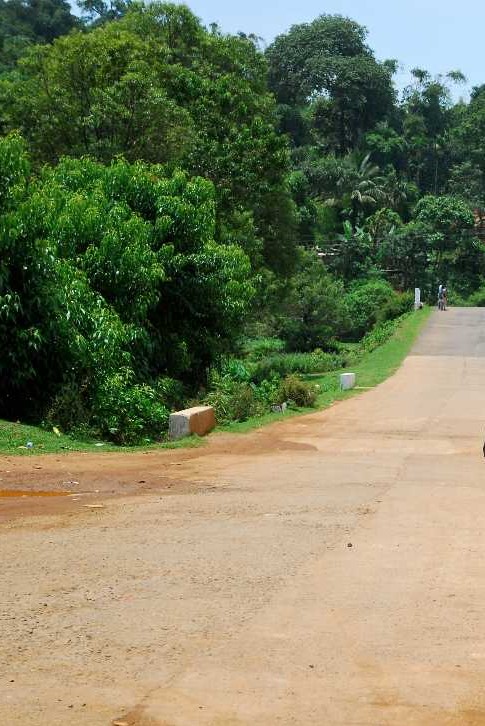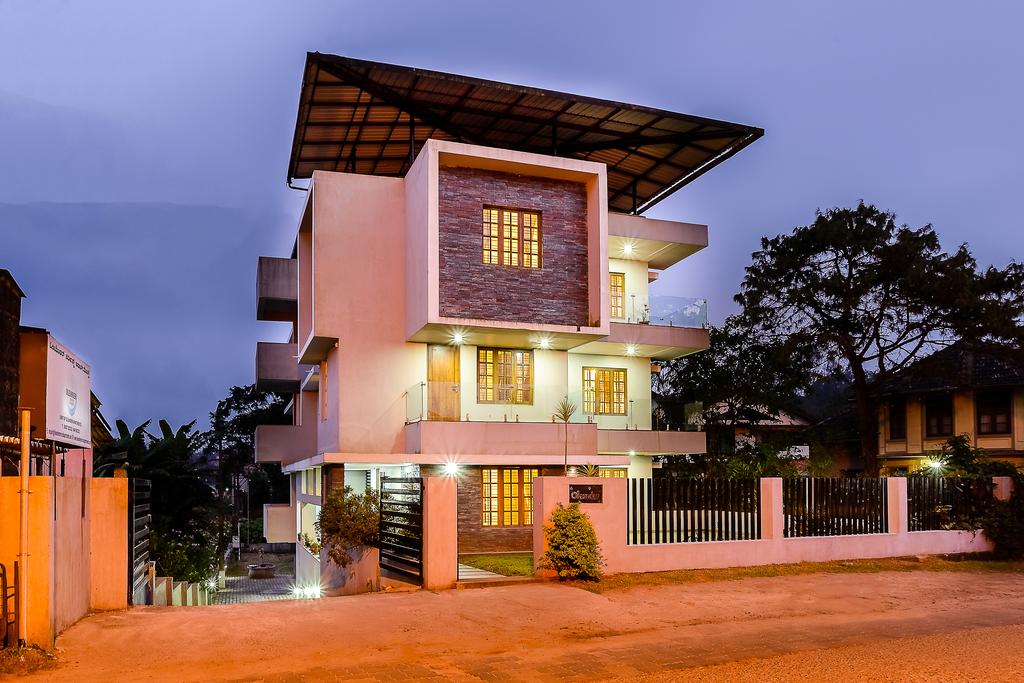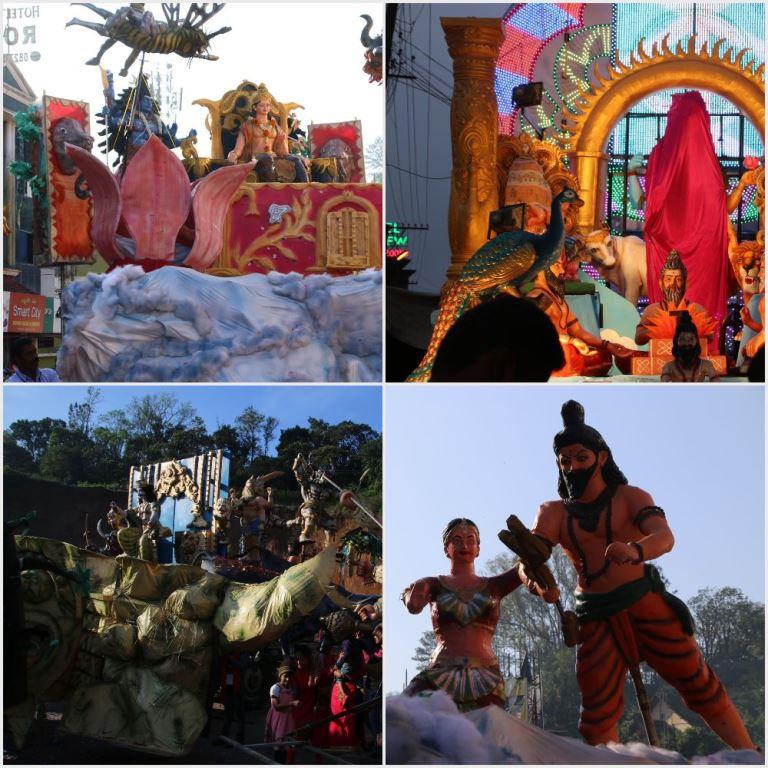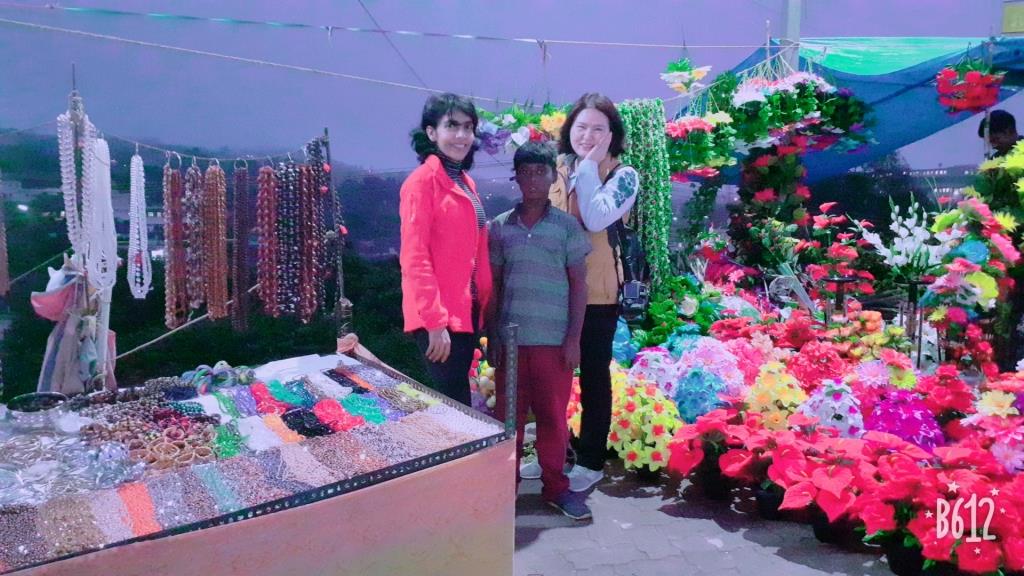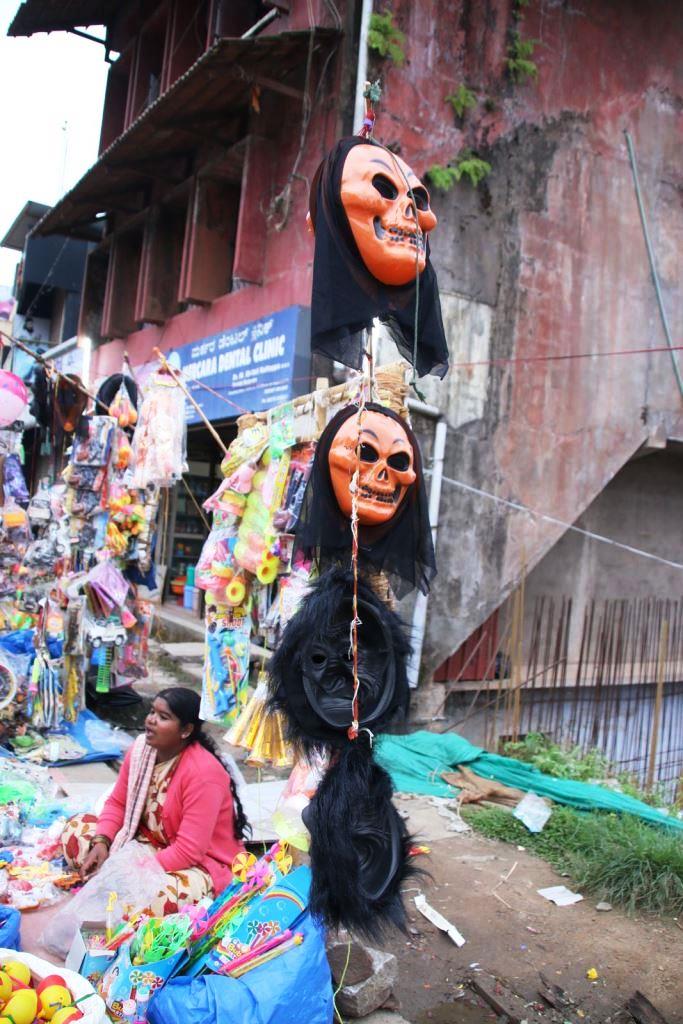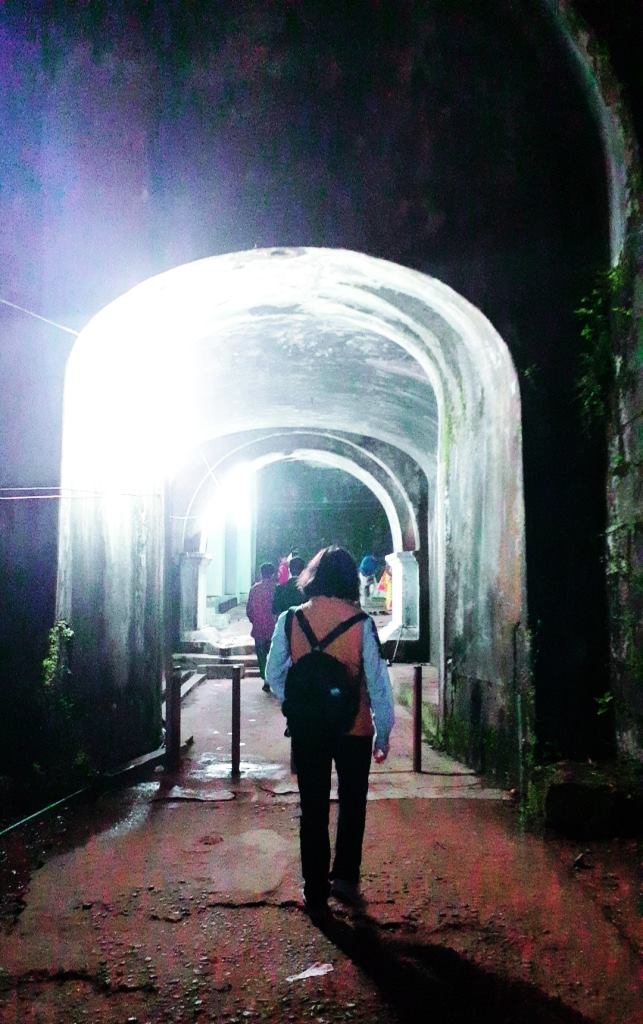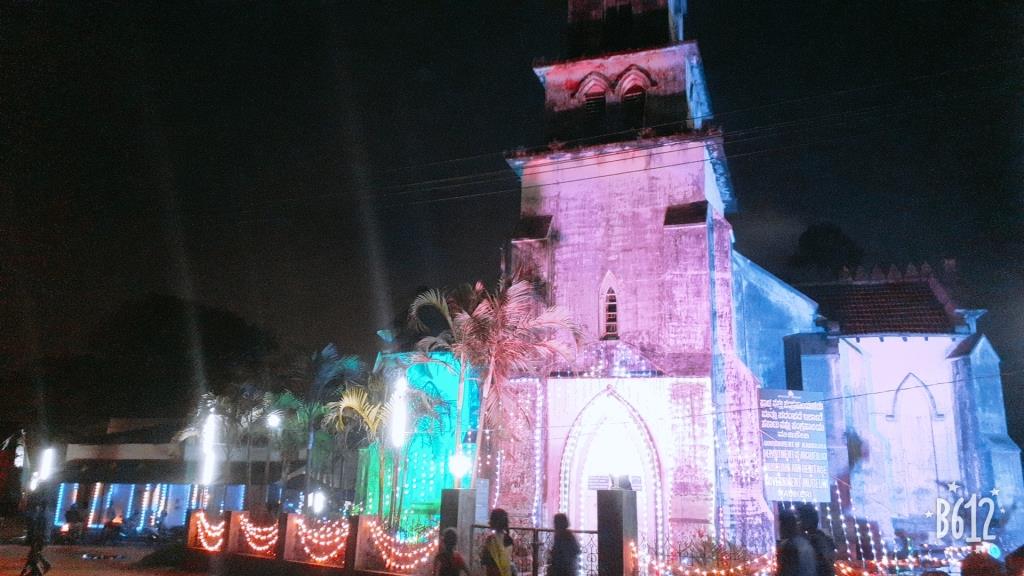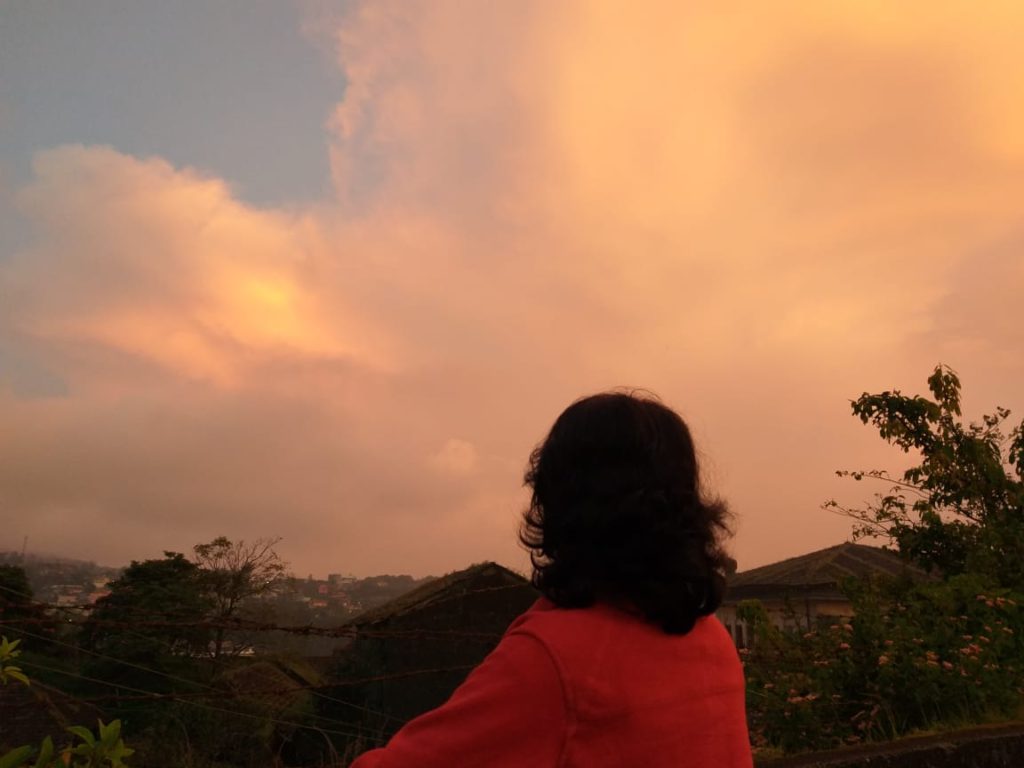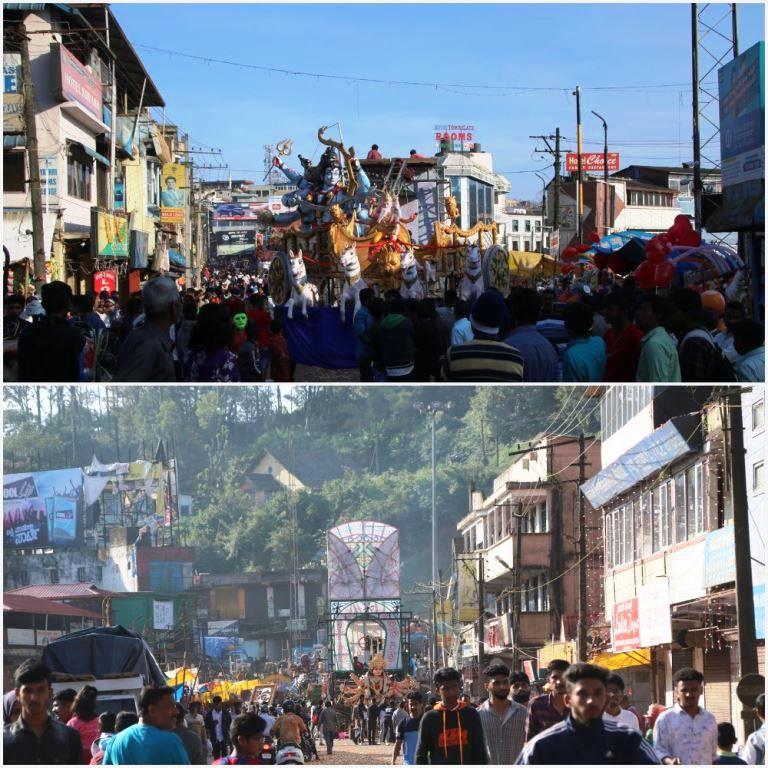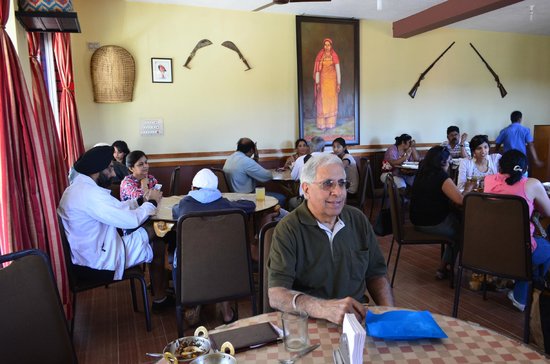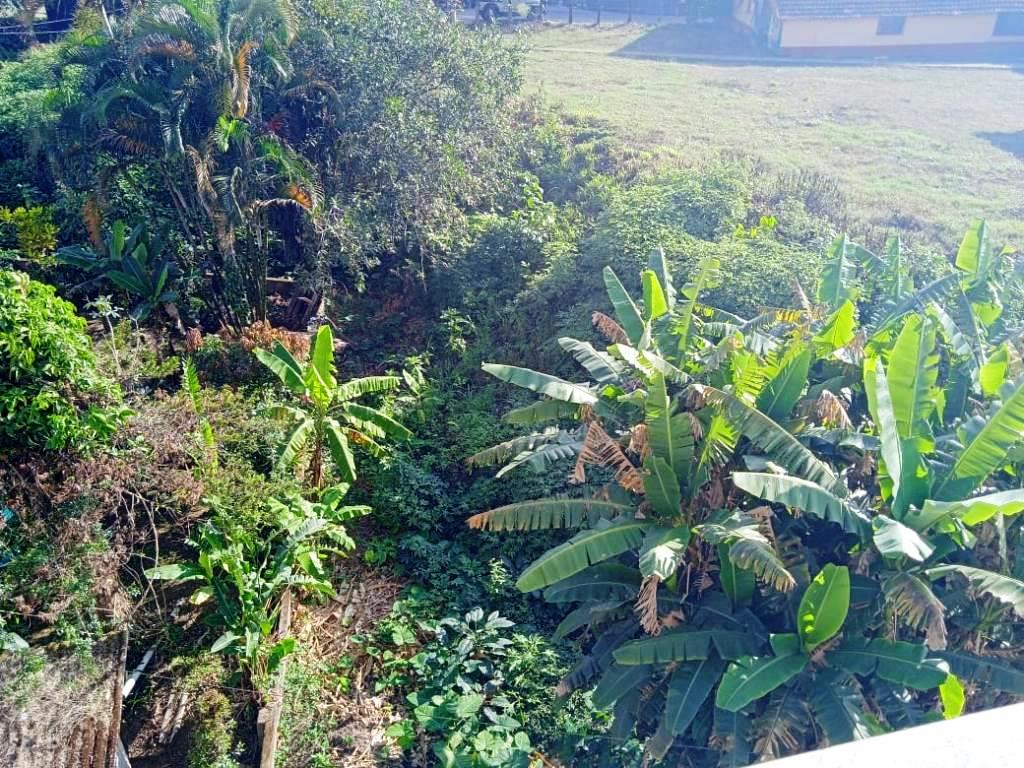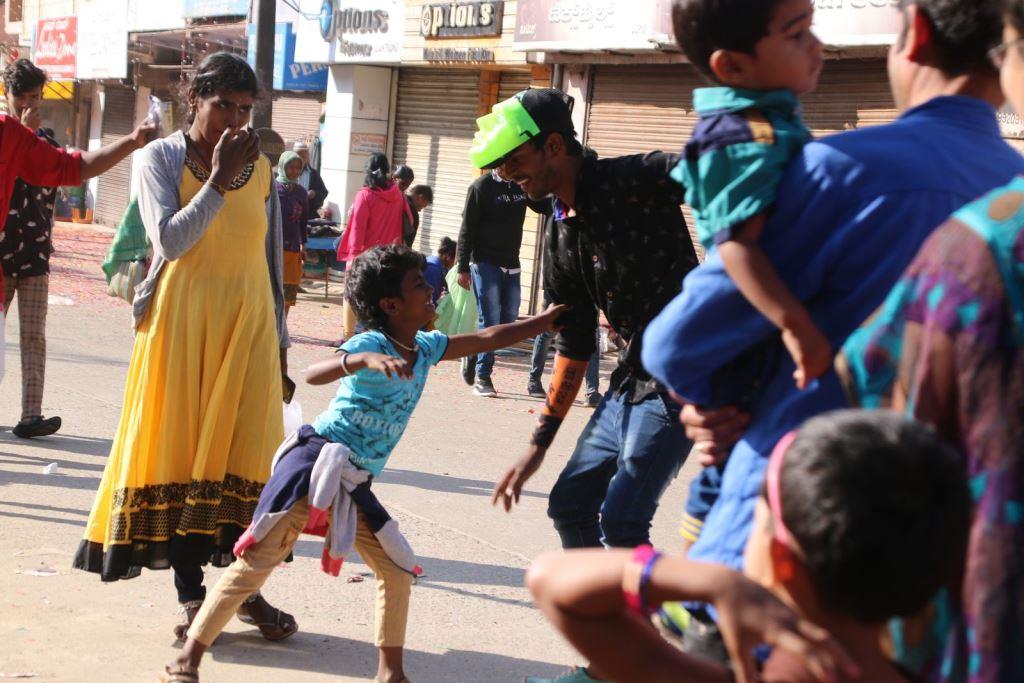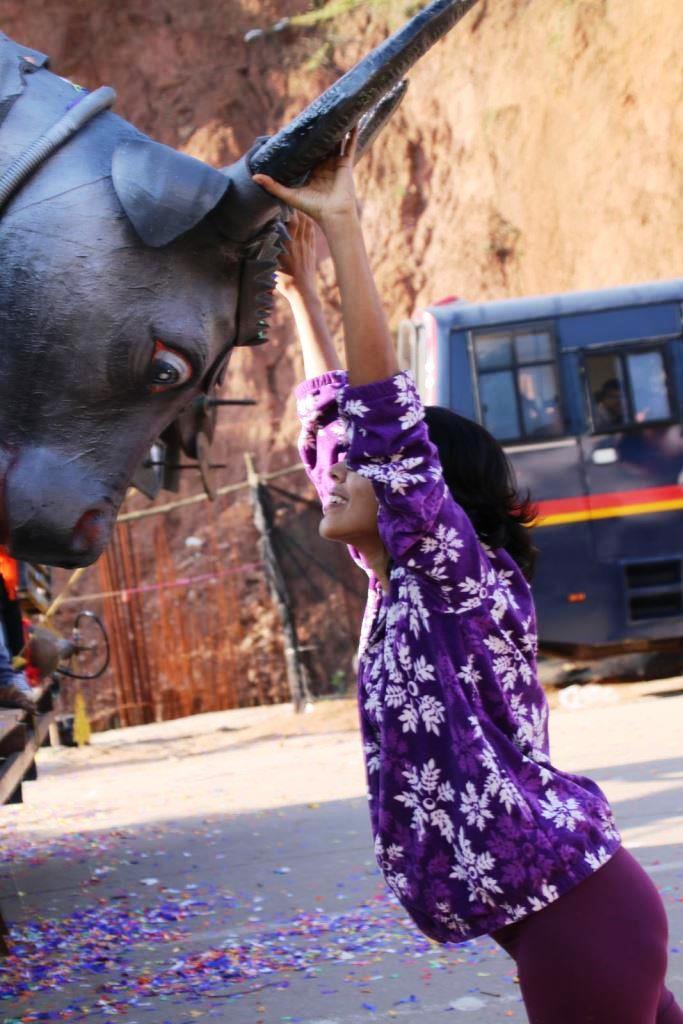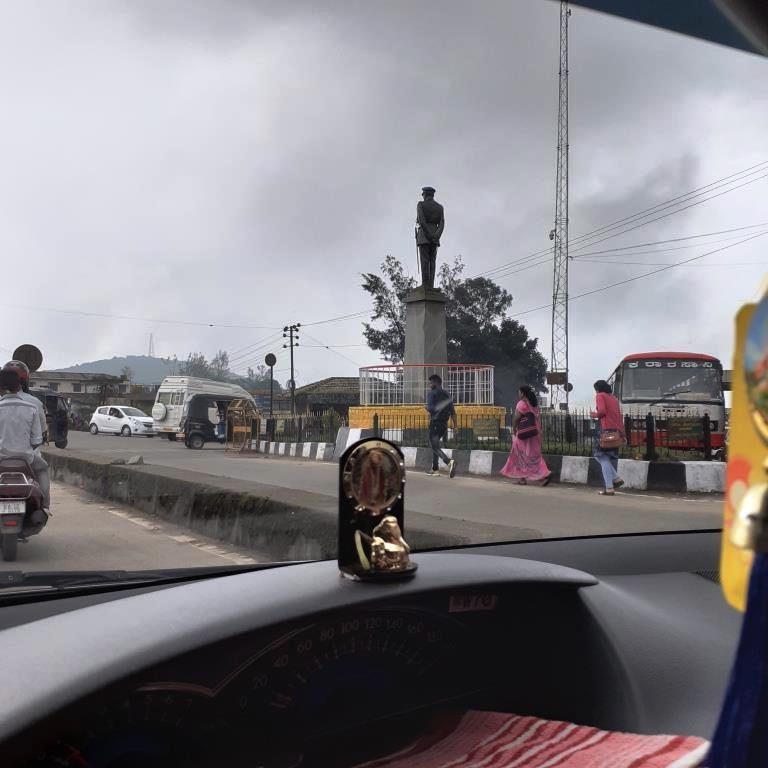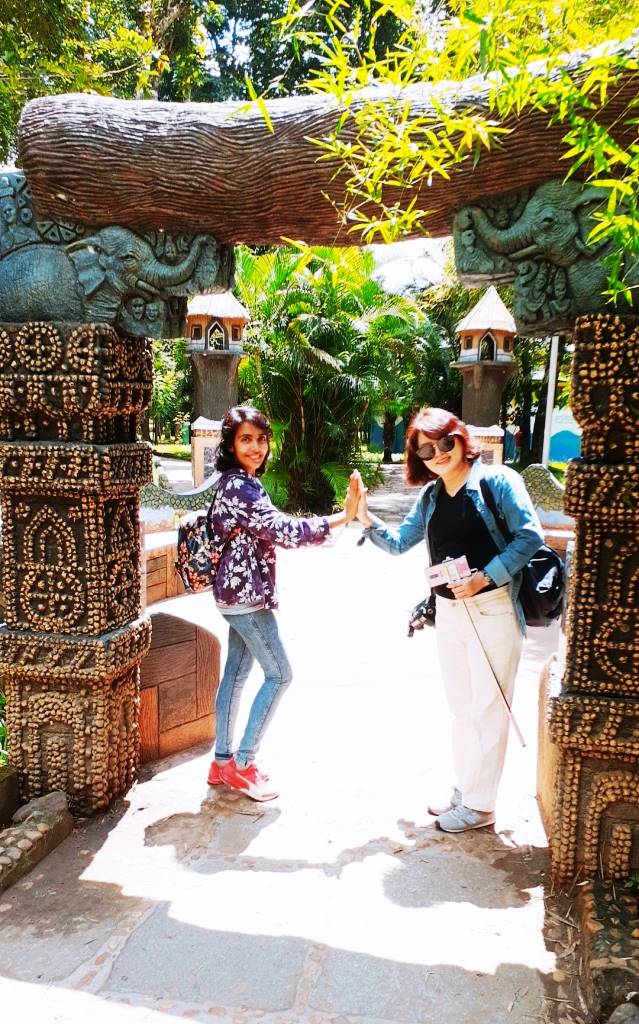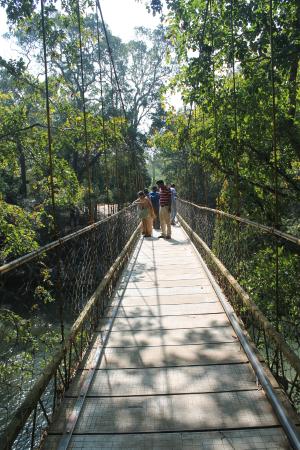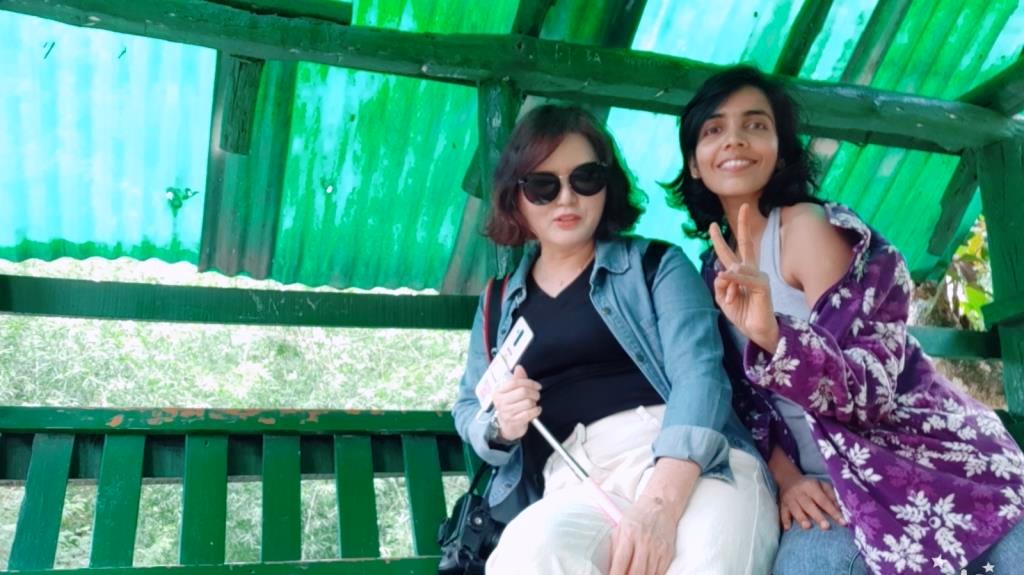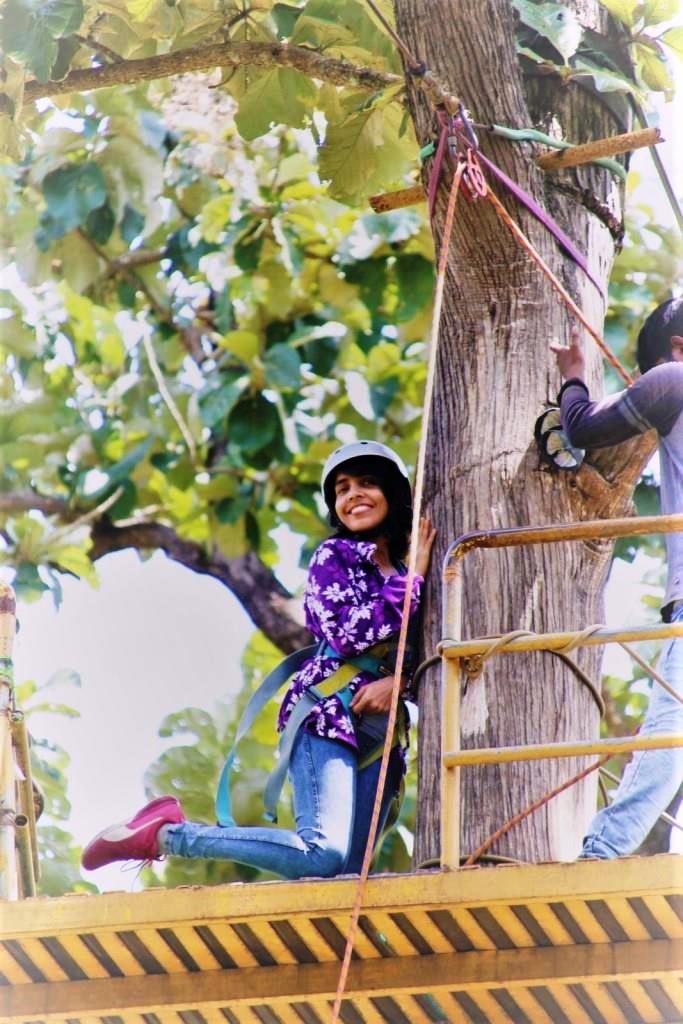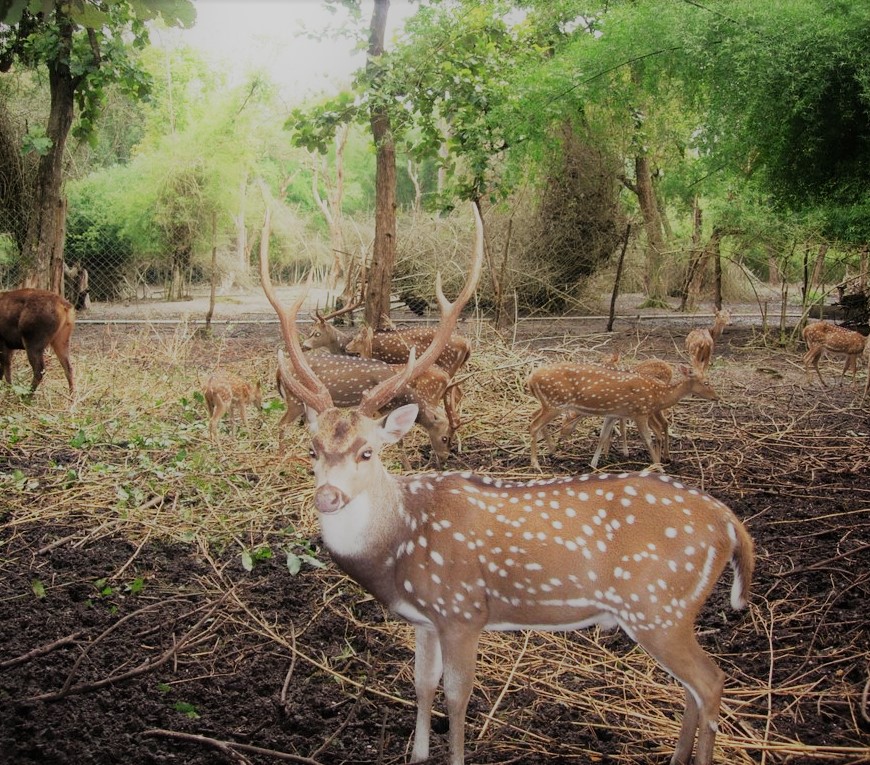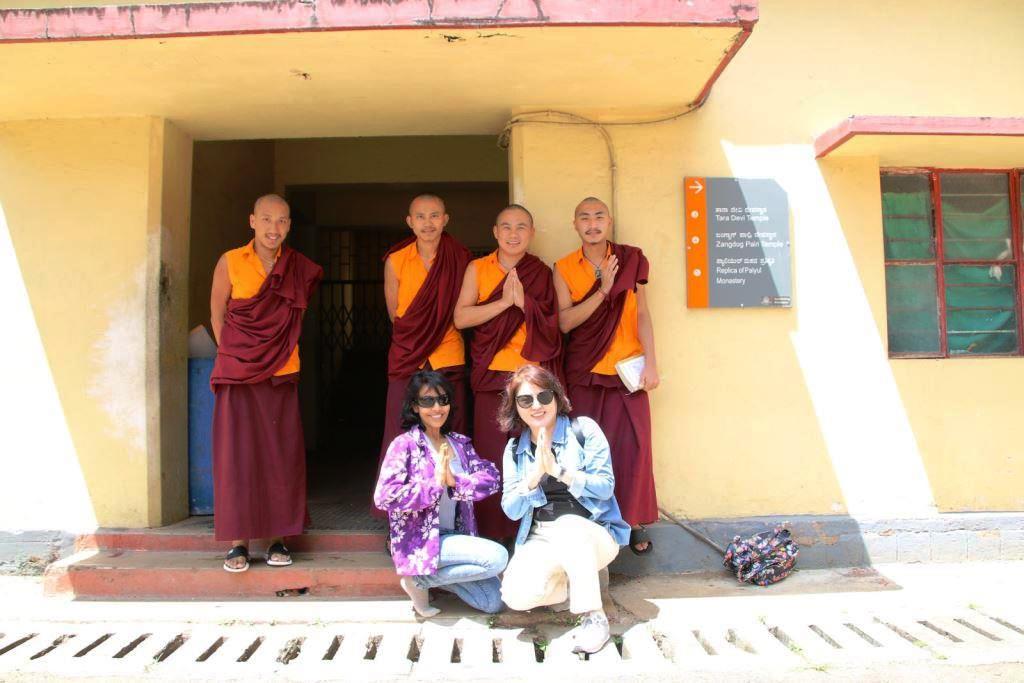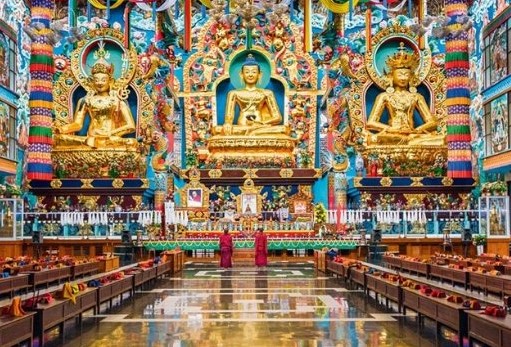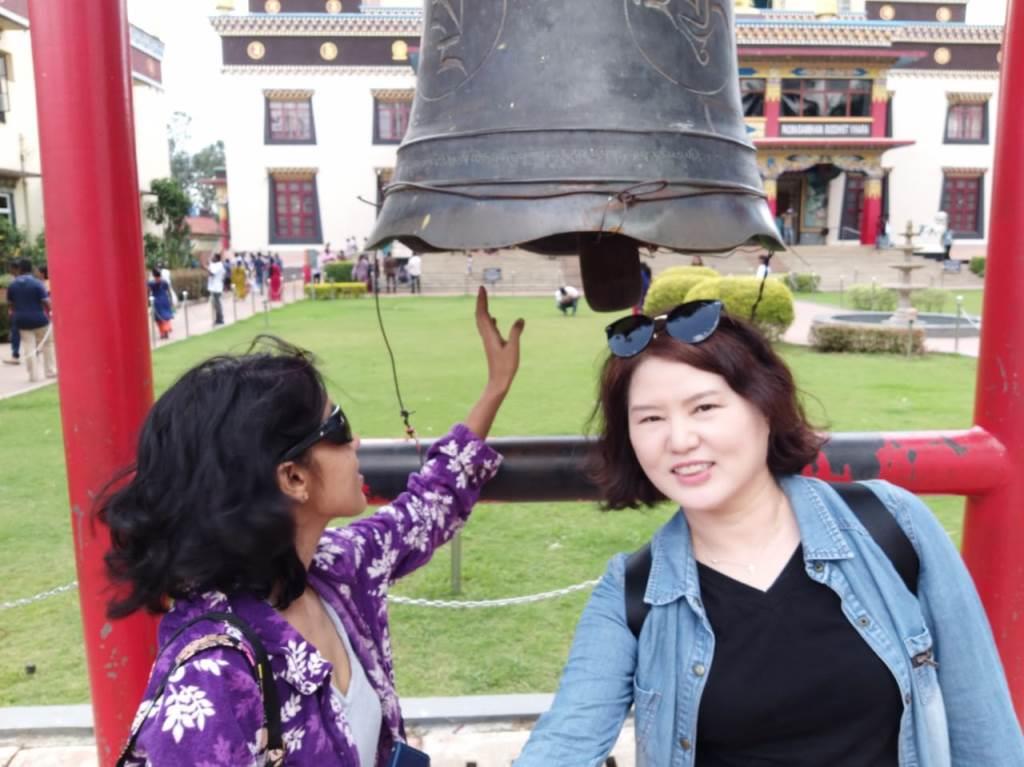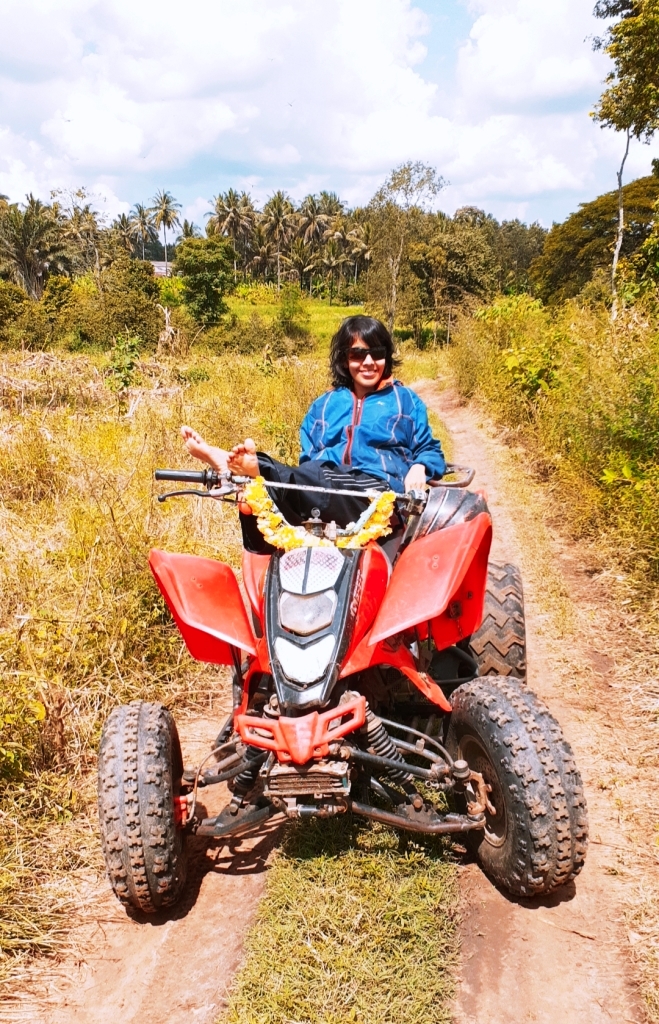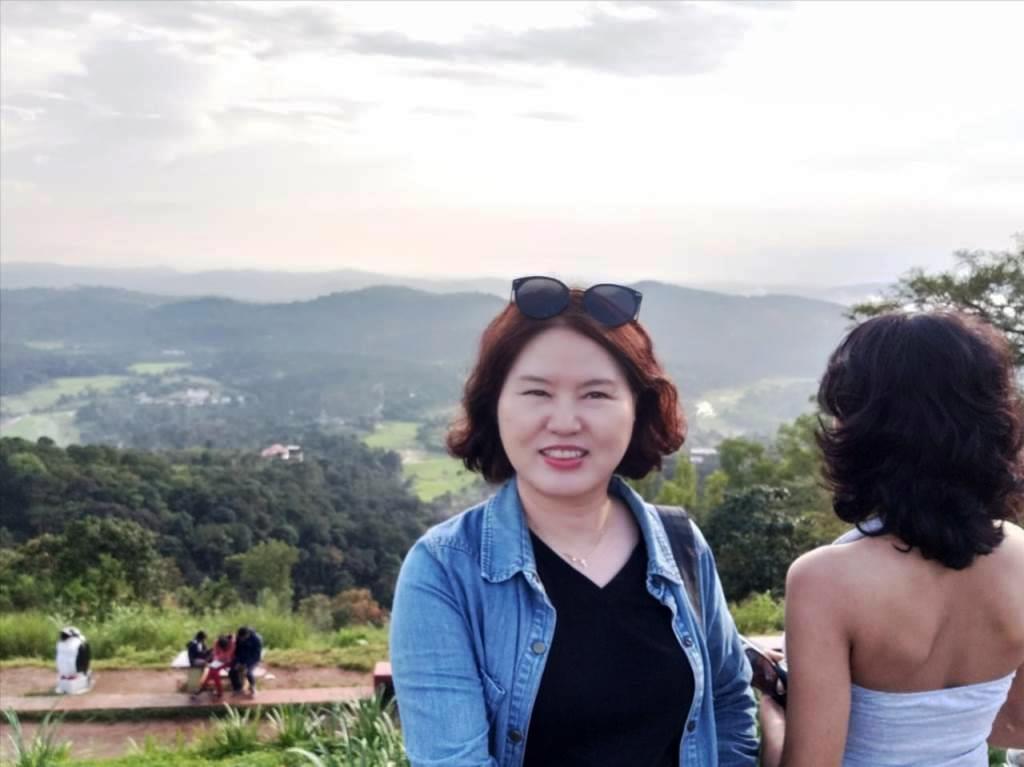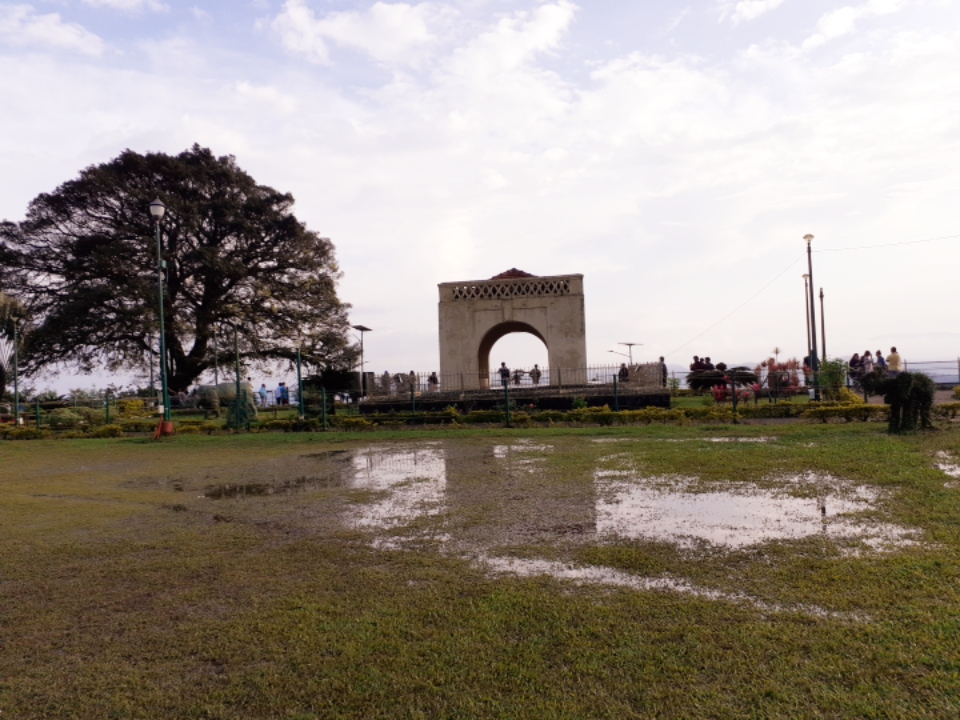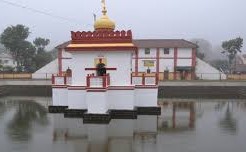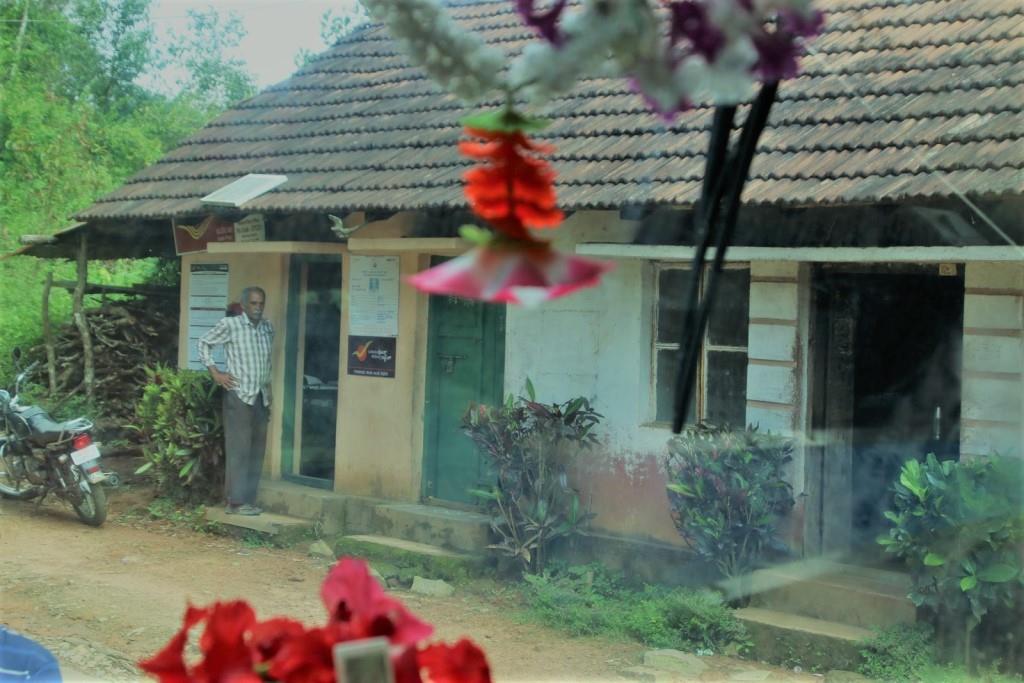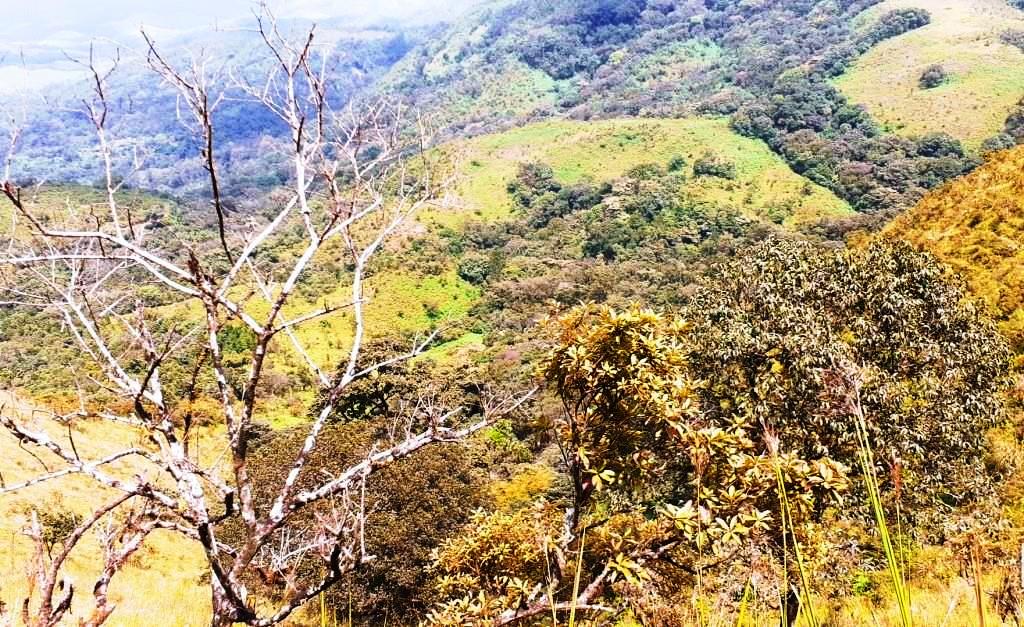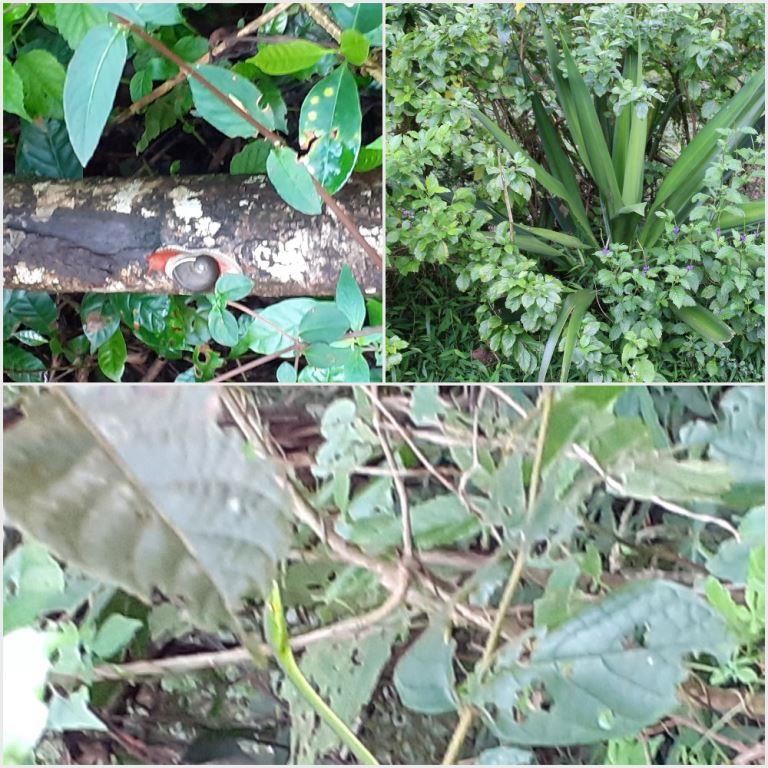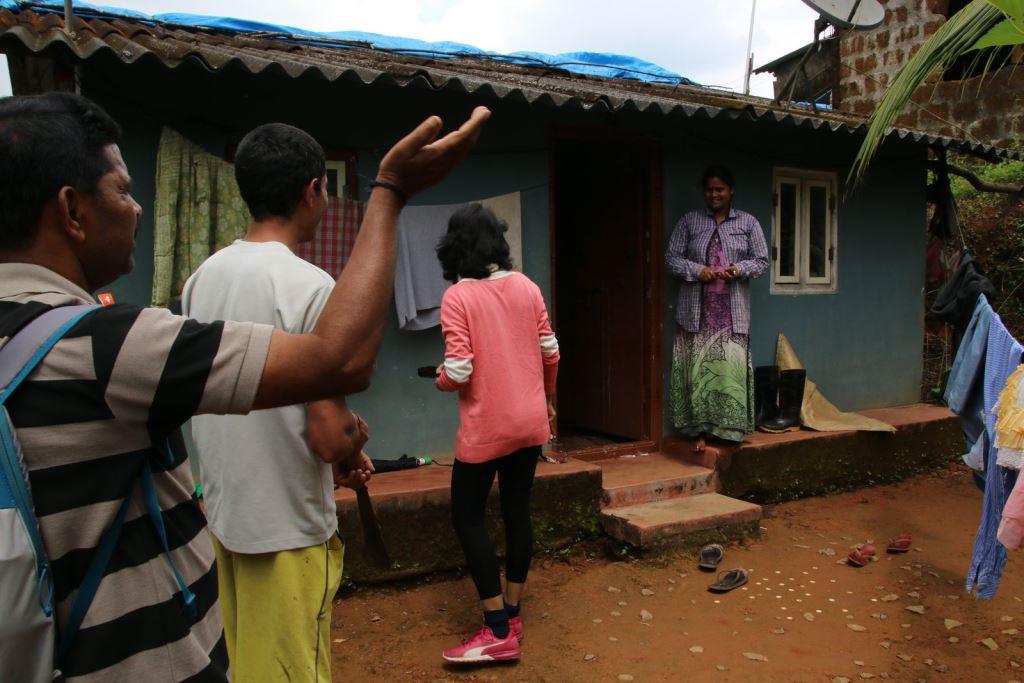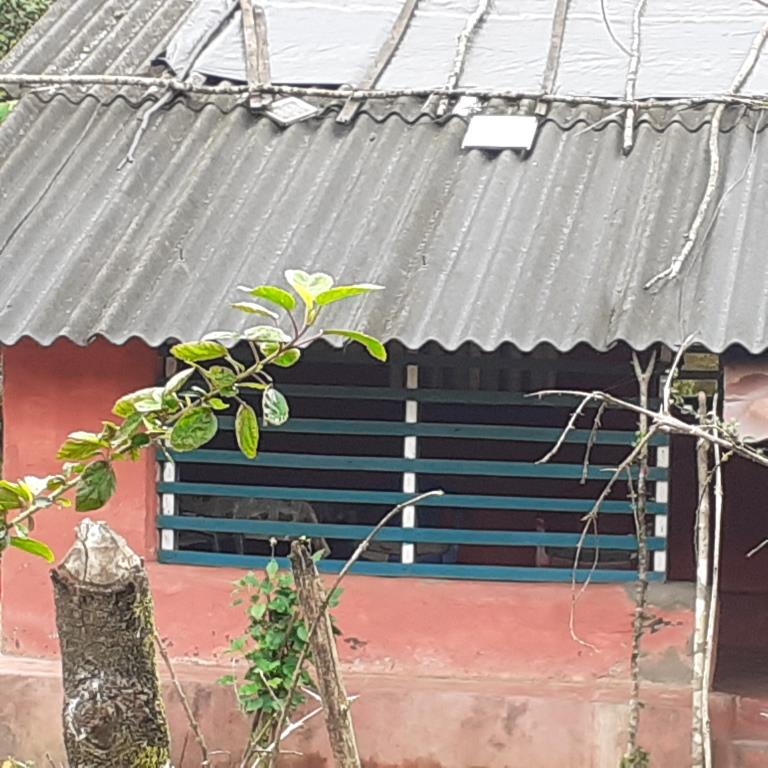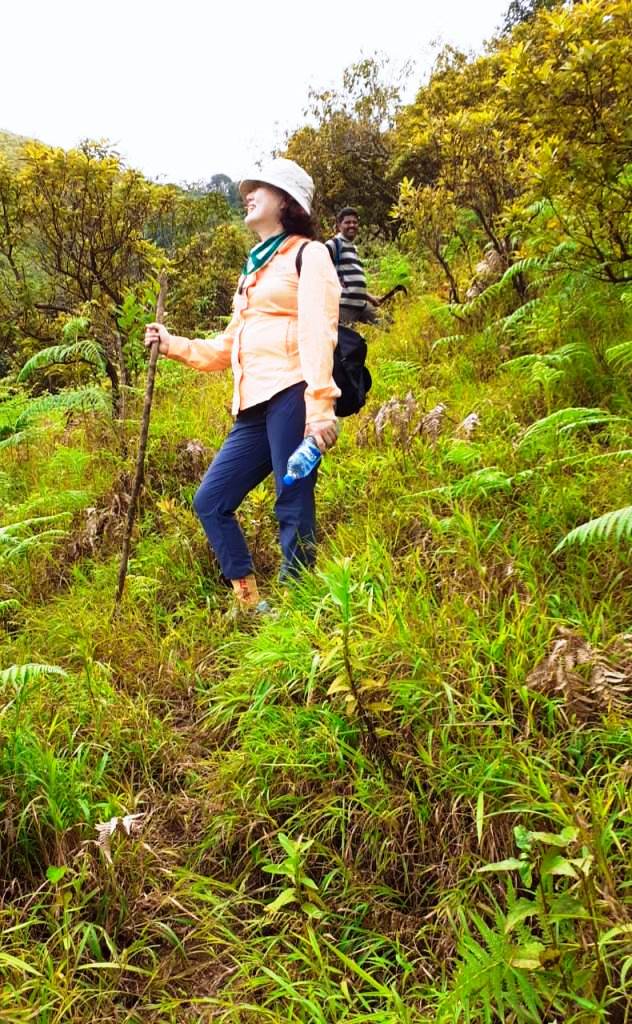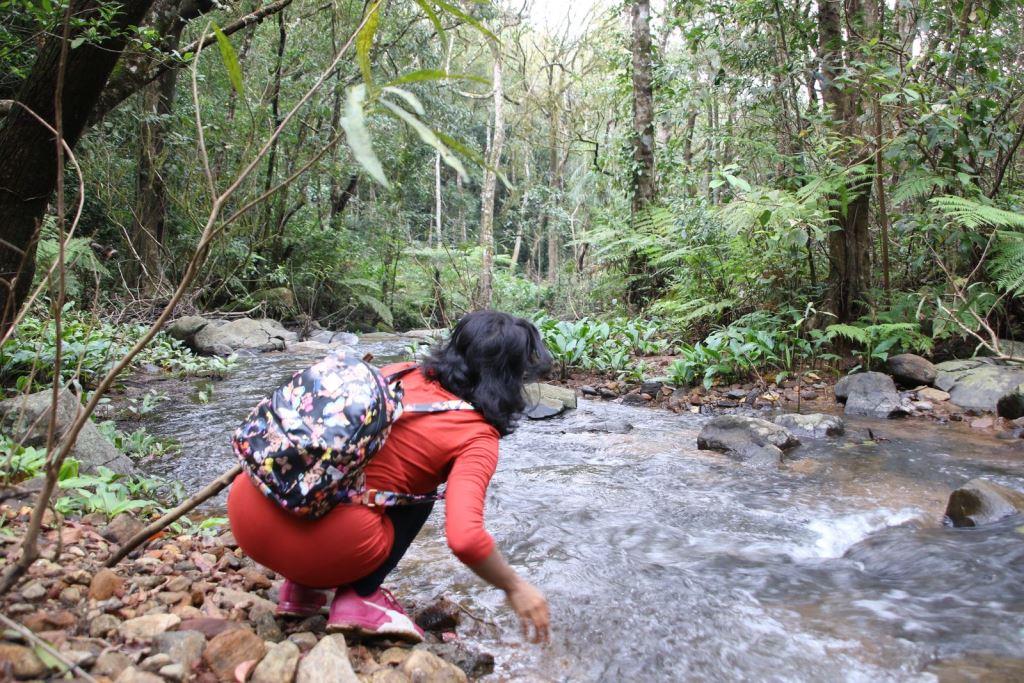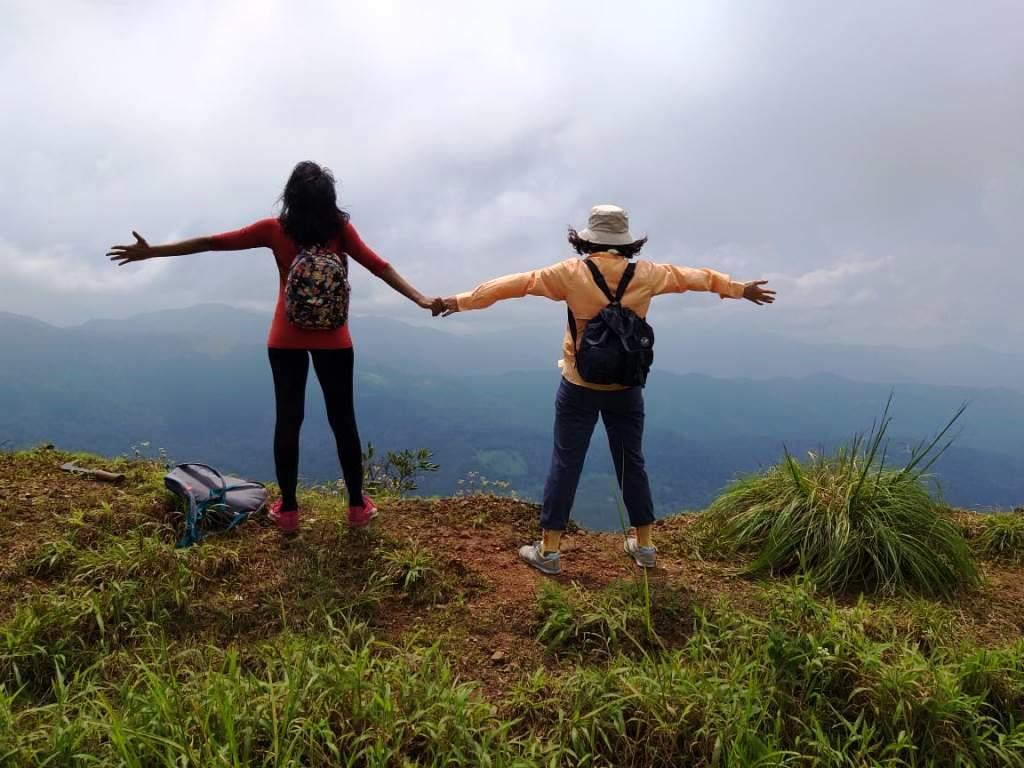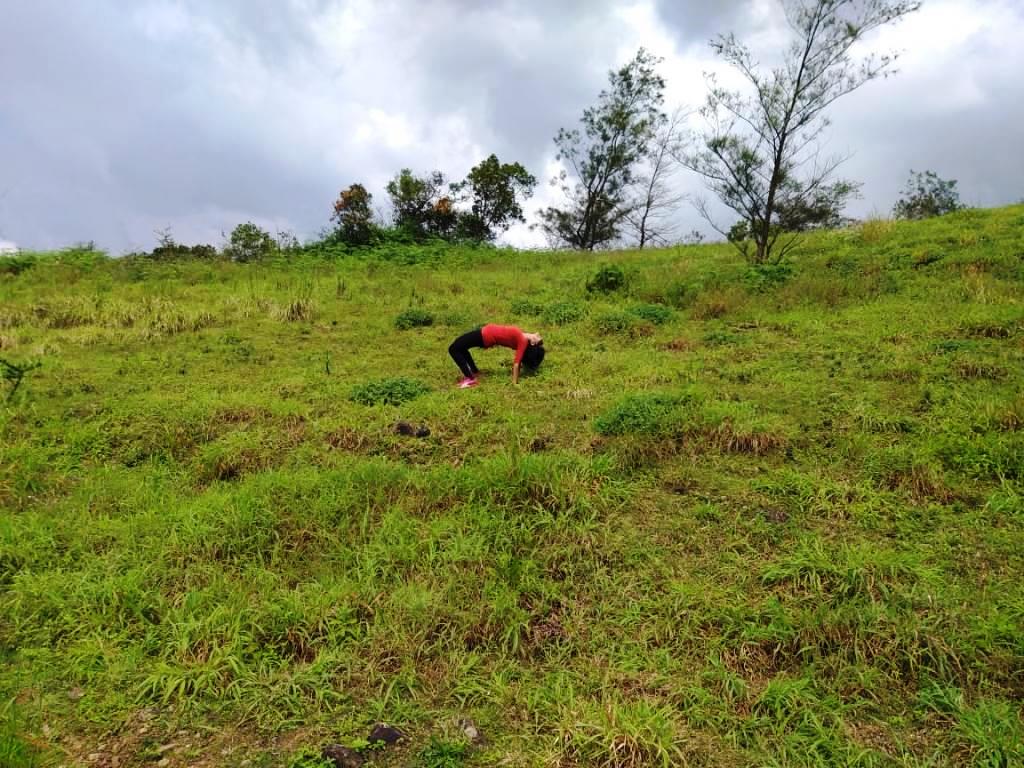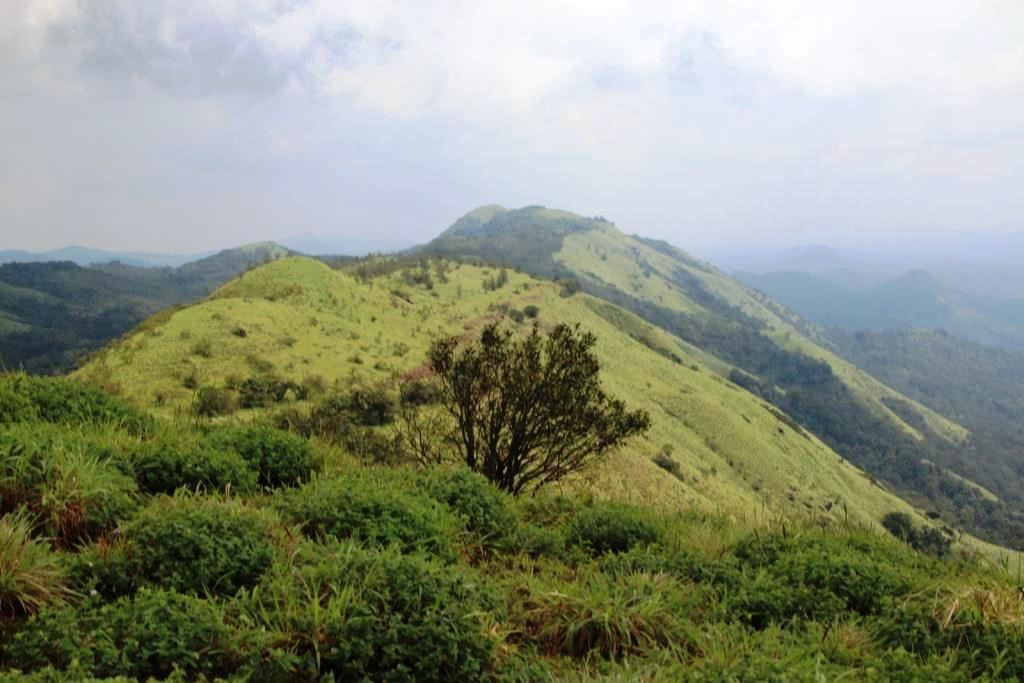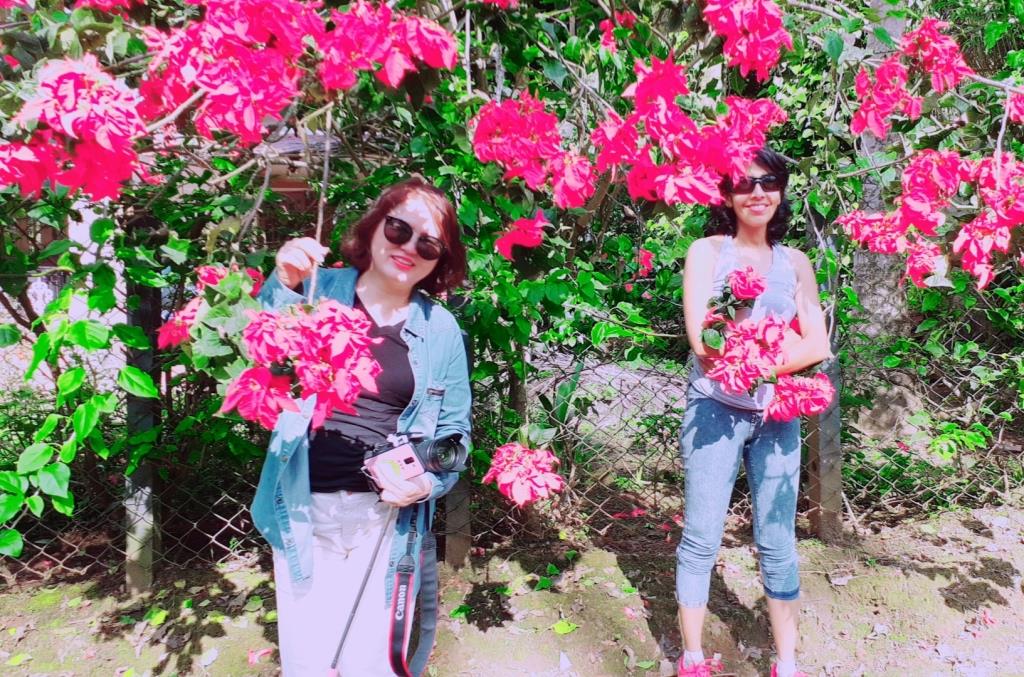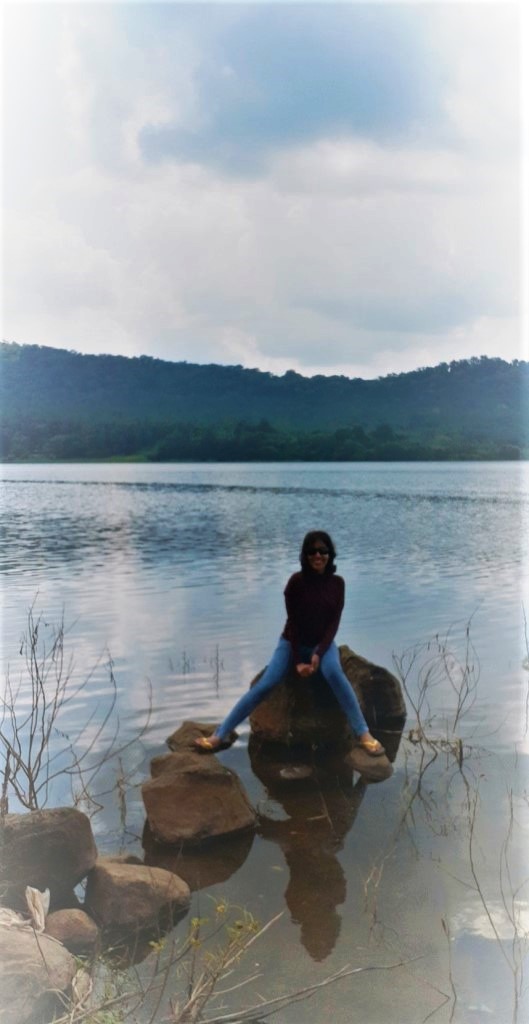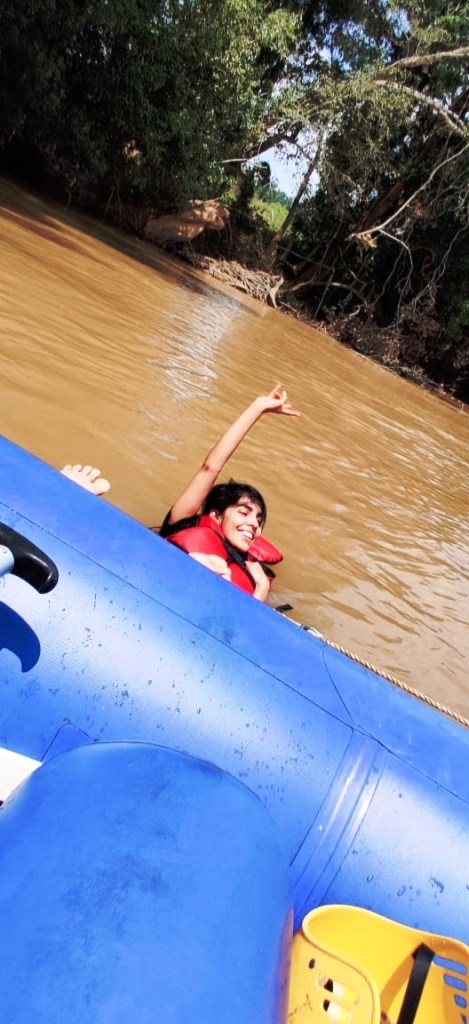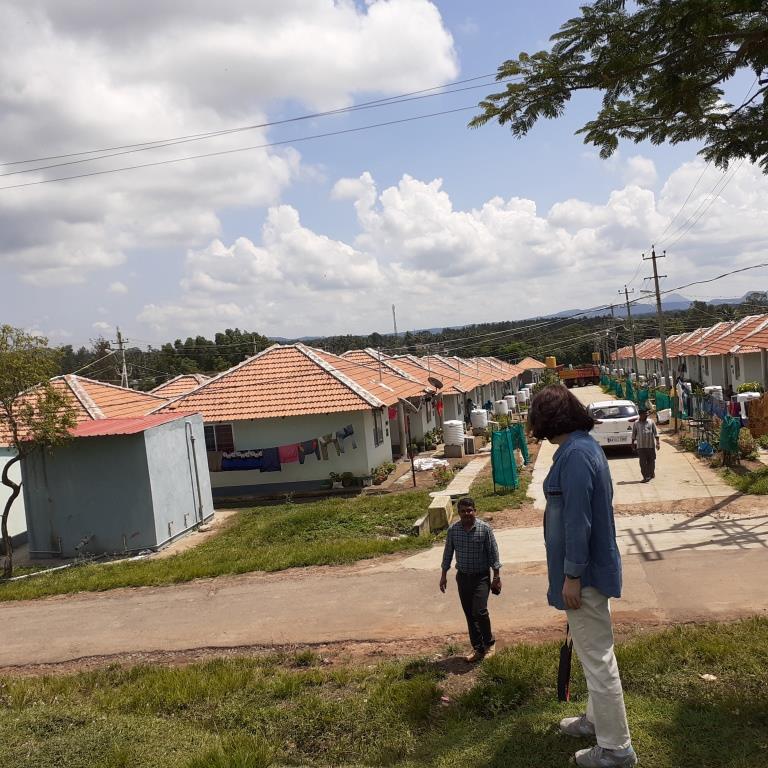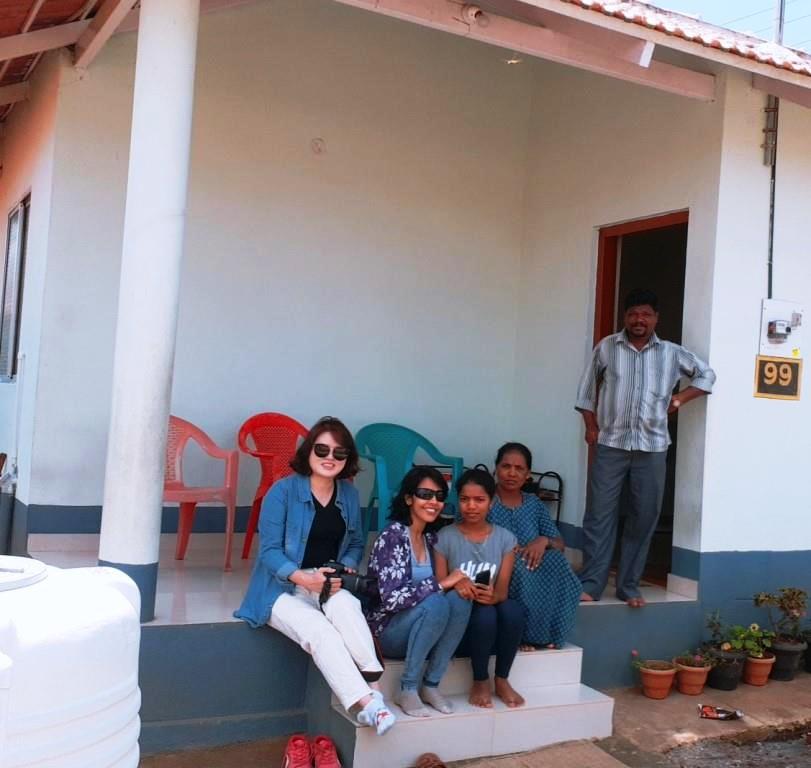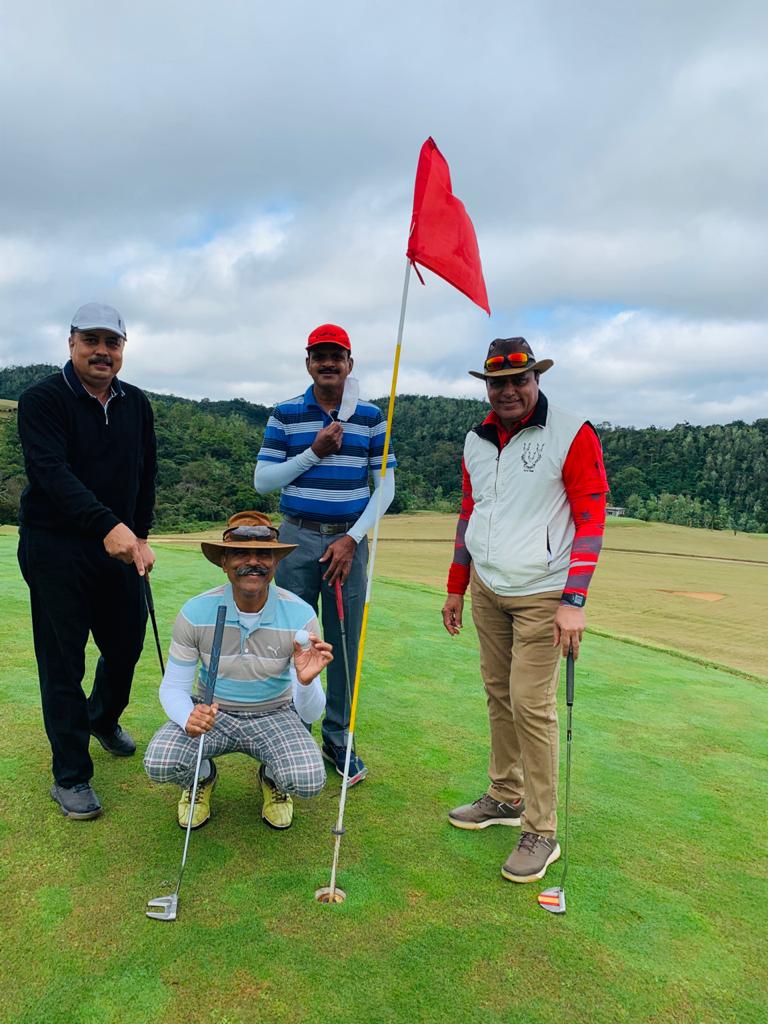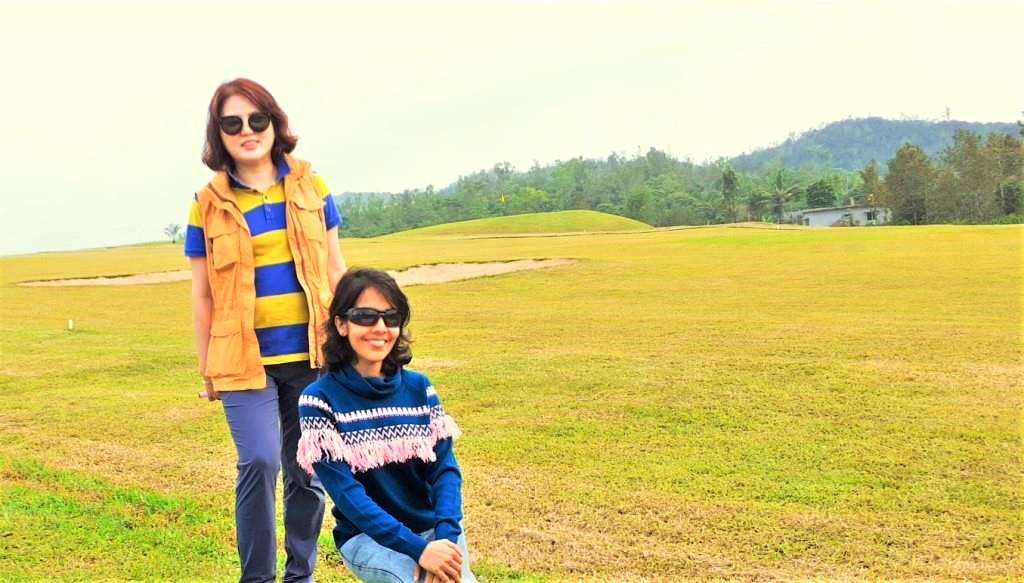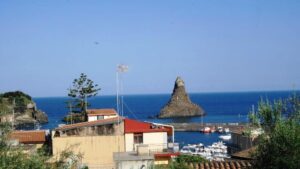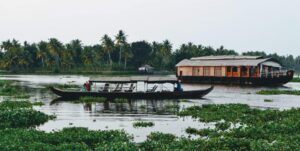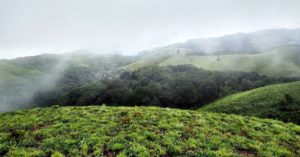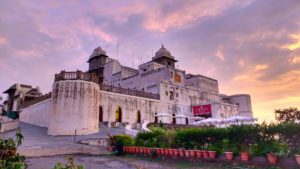A Peep Into the ‘Scotland of India’

A Peep Into the ‘Scotland of India’- Coorg, Karnataka
The enthusiasm to reach Madikeri, the district headquarters of Coorg in Karnataka never waned, though our day began so early, hours before 6 AM when we boarded the Shatabdi from Chennai to Mysore and the 3-hour drive from Mysore to our destination took a toll on us. Choi Myunghee, my travel buddy with her wealth of travel knowledge had everything in her backpack to keep us going. The executive class of Shatabdi Express didn’t offer any surprises that we usually have to tackle while we opt for train travel in India. Contrary to what we expected, the hill station was noisy and crowded because of the imminent Dussehra procession. Unbounded merrymaking was largely written on the faces of all. Guided by Santhosh who managed our accommodation, we reached Treebo Trend Oleander. After a warm shower, we couldn’t wait to get out into the town. Final touch-up on the Dasha Mantapas, towering mechatronic statues, colourful shops, bargaining voices that rose above blaring music, gleeful faces, the aroma of foods and spices that wafted everywhere, and looks of anticipation excited us. Run up to the most famous festival of the country was a sight to see.
Few minutes of chatting with Buddhist lamas around Shree Kote Mahaganapathi Temple gave us an idea behind the historical significance and extravaganza of the festival. Long ago, the people of Madikeri suffered a grave disease, and the then King sought a divine intervention by carrying out ‘Karaga puja’ to appease the four ‘Shaktidevata’, and thus the spread of the epidemic was contained. Ever since, celebrating the victory of good over evil happens in the best possible ways with moving Mantapas that showcase Puranas or mythological stories. Dussehra at Madikeri is a lifetime experience for anybody from any part of the world. The night grew darker, the floats began to move, crowds trickled in, ready-to-rock DJs held sway, Madikeri danced away to an enticing mix of Kannada and Hindi rap, my legs grew tired and I half-heartedly made my way to my place of stay after a heavy dinner at Coorg Cuisine, the much sought after restaurant for akki (rice) roti and bamboo pork.
Coorg Cuisine replayed in my mind for the hospitality and their kind of customers-daredevil foodies. A family of 12 at another table who also looked like a family in no rush, probably regulars ordered just about everything in the menu card that they were able to pronounce correctly and were amiable to the extent of suggesting dishes as well as giving dining tips to a few of us. Myunghee could hardly believe she was part of an all-night rave in India, safe and sound too. Every fleeting moment was captured. The sounds of the carnival that put me to sleep also gave me an idea of what Haleri Kings were made of for people to honour their legacy and continue the rich tradition.
We woke up to music and cheer. Within minutes we found ourselves among the boisterous crowd, also the last revellers dancing their way to bliss. Anywhere I turned, I saw a garlanded statue of the first Indian Commander-in-chief of the army, general Field Marshal K M Cariappa. To me, it felt as though this proud son of the soil was overseeing everything that happened in his hometown. The reeling floats finally halted with the sun shining brilliantly to colour the town differently. In Madikeri, the prevailing sentiment is that Dussehra is something to be enjoyed, not witnessed.
Our driver Faizal regaled us with stories of past Dussehras till we reached Nisargadhama, a delta formed by river Cauveri in Kushalnagar. The hanging bridge that led us into the reserve did sway a bit and the old damaged bridge close by made me a bit nervous. But I kept myself mentally occupied by trying to remember a word and before I crossed the bridge I got it right: gephyrophobia- fear of bridges. Natives and tourists relaxed in small groups for Nisargadhama looked like the ideal place for mental and emotional flourishing. The quietness of the place took my mind back home to wonder what my family had for breakfast and if the lunch will be delivered in time.
Nobody will feel bored walking through the well-maintained trails because human-sized figurines in Kodava attires on either side offer visual storytelling to any observant visitor. Just when I yearned for an adrenaline rush, I spotted ziplining. Before I could decide if those screams I heard meant panic or excitement, the guide had already pushed me down the line. Breathing and posing, I zipped past for the first time in my life. While removing the zipline harness I realized I’m good enough for a superwoman zipline. Spotted deer and stags loitering about slowly with their curved three-pronged antlers stood and stared, posed for all. Climbing on to every other treetop watchtower provided me with a satisfying view of the whole islet not to mention the shaky wooden ladder.
Driving to Bylakuppe, the second largest Tibetan settlement in the world outside Tibet after Dharmashala, Faizal in his broken English and chaste Tamil kept us engaged with facts about how the town came into existence. Through the rearview mirror, Faizal glanced at Choi Myunghee and she gestured to him to continue the story in Tamil. Long rows of fluttering prayer flags and beautifully strewn monasteries beckoned us. In spite of the tourists, the place was tranquil and quiet. It took much of my effort to learn the names of the three towering gold plated statues of three saints set against intricate murals and impress a few monks and devotees. A word of prayer to saint Padmasambhava for making me more kind and compassionate, one to saint Sukhayami for peace that passeth all understanding, and last one to Buddha Amitayus for a long life. Unfortunately, my synonym to a long life is everlasting. A casual chat with Pawan aka monk Rigchog who seemed to know a handful of Indian languages gave me a vivid idea of what is required of monkhood. He enjoyed the question-answer session but glances from other tourists who wanted to meditate made me forget the other dozen questions I had in my mind.
After the chance encounter with Rigchog, I found my nerve to interact with many more monks from Ladakh, Nepal, Tibet, and Mongolia. Many conversations began with a Namaste, continued through uninhibited chuckles and debates, and ended with cool photographs. All religions propose sound ethical principles that help followers to develop wholesome qualities such as love, generosity, detachment, and compassion said a Bhikku. He was quick to admit that the spiritual needs of humans are so diverse to be encompassed by single teaching.
What more do we need to understand the reason behind the thorough tolerance and genial goodwill the Buddhists have displayed towards the many other religions throughout their long history! Given the beautiful frescos that depict Buddhist mythology and traditional Thangka paintings in smaller Padma Sang-Ngag Choekhorling and Tashi Lhunpo monasteries, I got lost in time. Rhythmic chants, flickering butter lamps, and moon-faced monks held my attention helping me realize that I’ve finally learnt to sit still and silent. During that short stroll back to the car, my mind was flooded with thoughts of the first settlers of Bylakuppe in 1961, their anxiety as refugees, their gratitude to the then government of India, and the appropriate financial management that makes sure the smooth functioning and flourishing of their educational institutions, till I spotted that big bell in the courtyard. Bingo! We rushed towards it. Alas! It was tongue-tied. Yes, all bells in Bylakuppe do not ring for no reason.
As the car sped its way towards our adventure destination, I kept reassuring myself over and again that I’ll visit the ‘Little Tibet’ in the ‘Scotland of India’ as many times as possible. Such is the mystic and charm of the place and people. My hunger pangs disappeared on seeing quad bikes. Ten minutes of instructions on the hows and whys seemed like an era. On my quad bike, my fantasies as Jesse Mach’s leading lady gave way to fear and excitement as I failed many an attempt to maneuver the machine through steep slippery slopes and slushy swamps. Neither I nor my fellow riders were surprised when my bike stopped. My travel buddy quipped, “Nothing ends a perfect ride quicker than a broken chain”. Thankfully, the broken chain came as a saving grace. I earned some time to gaze at the plantations and farmlands around. My instructor turned a photographer and I a poser on my incapacitated bike. As if my instructor already knew what was coming he made sure I was on another bike in less than fifteen minutes. The 4km trail did test my endurance, strength, and courage. When I got the hang of the sport it came to an end.
An hour later, I woke up to sounds of hawkers and costermongers crying, ’Buttered corn!’, ‘Oranges!’ and ‘Spices!’ We were at Raja’s seat, a famous sunset point in Madikeri. In that beautiful misty-laden place few cups of hot tea saved me from freezing. To a Chennaite, any temperature less than 35 degrees Celsius is ‘freezing cold’. Sipping my last drop of tea, I sighed, ‘Kings of Yore and their consorts should’ve been lucky lots’. A setting or rising sun is more than glorious for anybody with a loved one beside. Suddenly the clouds lifted up revealing lush green valleys, rolling hills, and winding roads. A chill wind brushed softly against my face now and then but somewhere between the sudden bursting of the sky into colors and the swirling, moving, dimming, brightening, and fading, I stopped complaining about how cold I felt. The sunset in all its splendour colored my soul. In my mind’s eye, the movie didn’t end till we reached Omkareshwara Temple, built by King Lingarajendra II in the 18 th century to honour Lord Shiva.
Few locals who were relaxing by the water tank turned storytellers in no time. This temple, a token of a King’s penance for a murder reflects a unique blend of Gothic and Islamic architecture with a huge dome in the centre and four minarets in four corners which intrigues many. Carps in the water tank soothed my troubled soul and I stopped deliberating on, ‘A temple to appease a murdered soul!’ An alarm from our biological clocks set us in motion and we headed to our favourite dining place, Coorg Cuisine which overflowed with golfers who were there to play a tournament at the Mercara Downs Golf Club. An avid golfer herself, Choi soon found herself in the company of a few friendly golfers and the kindest of all Shri. Ranjan Sood extended an invite, which we gratefully accepted.
There’s nothing like a good breakfast to recharge oneself if the day ahead is long and tiring. Just as we were about to wind up our breakfast, the doorbell rang. Our trekking guide B B Chennappa fondly called as ‘Trekstar’ greeted us with an ‘Are you ready’. But for Choi’s passion, I wouldn’t opt for a 15 km trek. We boarded a bus that dropped us at Galibeedu which is also the starting point of the trek. Along the 7km drive, the bus stopped a dozen times, once for tea at the only tea shop I saw in that entire stretch. After tea, the driver conductor and passengers spent few minutes in the adjacent cottage-like building, the only post office, another time to collect a lunch box from a house, for a chat with a person who was familiar to all in the bus except the 2 of us, at a temple on request from a passenger and at a beautiful place to let us take some good photos.
Magic of wind and mist against our faces, we began our trek. Trekstar expressed his disgust for leeches and turned a botanist, zoologist, herpetologist, meteorologist, and news reporter depending on the questions I posed to distract myself from what I was attempting half-heartedly for the first time- A trek. A dark secret followed my introduction to Angel’s trumpets as flowers with medicinal properties. Fever, delirium, hallucinations, agitation, persistent memory disturbances, flaccid paralysis, convulsions, and death will result if eating the flower turns from best to worst. The flower must be renamed Devil’s trumpet at the earliest.
‘This is the Common Nettle plant which the tribes use to treat painful muscles and joints, eczema, arthritis, gout, and anemia’ said Chennappa. My curiosity to take a closer look prompted him to yell out its other name ‘Stinging Nettle’ and I froze for a second. Giving away my scornful glance I kept walking.
“Leaves of Agaves are used to make tequila and we have plenty here”, he said showing us wildly grown blue-green succulent plants. Eyes wide with excitement, my friend hummed, “Cause you and tequila make me crazy, run like poison in my blood”. Then a conversation ensued as to which one is better, Kenny Chesney or John Anderson’s ‘straight tequila night’.
Along the way, a couple joined us. They spoke a language that had bits and pieces of Tulu, Malayalam, and Kannada in it. I was glad to be guided by a polyglot. Just in case, a situation arises. The couple wanted to know how Chennai looked like. So shocking was the fact that the natives had to walk more than 2 km from their dwellings to make a phone call and more shocking to realize that there was no network coverage in our phones too. Trekstar proudly displayed the knife he carried in his backpack as and when Choi enquired the couple if the hatchet they carried was a dire necessity.
Amidst our chitter-chatter, gurgling streams, burbling rivers, and non-stop cricket stridulations, I wondered “Am I going on a hunt for ‘Blood Orchid”. On reaching their abode, the couple invited us inside for a cup of tea. Ravages and devastations of the recent floods were visible in their eyes too. From her small garden of herbs and vegetables, she plucked a flower stalk and explained how useful the plant as a whole is for oral hygiene. As if I’m specializing in phytotherapy, our guide enlightened me, “Prickly Chaff Flower”. We bid adieu without exchanging phone numbers because I didn’t mean to risk anybody’s lives to say a hello.
For the next few hours, I didn’t think of anything but listened to Choi and Trekstar as I negotiated and enjoyed completely contrasting landscapes and weather. Drizzles cooled us, in no time winds dried us up. Trekking turned out to be rainbows and sunshine. Spotting a tribal dwelling meant a breather because Trekstar stopped to explain their small vegetable patch, white cloth pieces that kept wild pigs away from their gardens, how pet dogs kept leopards and elephants at bay, and the small solar panel on the roof which was meant to light one bulb. He explained at great lengths till somebody stepped out of the hut to exchange a few words with him about the recent developments in the family, around and about the place. We spotted a few tree snakes, snails, big bugs, and beetles. Stories of tribes trading tusks of dead elephants for old clothes saddened me. How and why they look out for ‘Magic mushrooms’ is another sad story. Cold, inviting streams eased our tired feet occasionally.
Avocado trees and honeycombs on cliffs enhanced my self-doubt that my favourite things don’t easily fall in place, in the right place. Trekstar’s familiarity of names, places and smells along the trails assured me that he can guide us, even blindfolded. A plethora of views kept me from nagging Trekstar and Choi with questions on the kilometres covered and yet to cover. It seemed like ‘THE PERFECT PLACE’ to test how adventurous I could really turn out to be. Surrounded by mountains on all sides, it felt isolated, wild, and in a way better than usual. Did I hear him say, “That’s Nishane Motte peak”. Yes, I heard it right. The Joy of running towards a summit, the exhilaration on reaching one, and the breathtaking picturesque vista can’t be written or said but they are to be felt and experienced. Chappathis, bananas, and hot coffee recharged us.
The spotlessly clean trail belied Trekstar’s statement that Nishane motte is a favourite spot of trekkers. Not after we knew he guided trekkers from South Korea, Israel and Germany. There is no need for ‘Do not litter’ signboards or clean up squads if people are blessed with a good conscience and civic sense. After loitering an hour at an altitude of 4,100 ft and feasting our entire self on the beautiful views including the Rajagiri Village, Kerala, we decided to trek back. Animal footprints, sounds, and droppings didn’t bother me. I almost became part of the wild with a leave no trace policy. Thin ridges became thinner, steeps gave way to easy walking, winding paths led us through different habitats, and exposed cliff edges offered the best possible views. On and off, we had to pause for those dramatic clouds to pass by. Empty water bottles didn’t upset me. Thanks to rich, clean, and wild resources. To me, a first-timer, anything looked like magic, everything came across as unthinkable, clouds that limited our visibility to zero seemed marvellous, accidental slips and loud shrieks and getting stuck in mud made me feel intrepid. Over engaging conversations, we learnt more about the others’ family and a few of their secrets too. Approximately after 3 hours we could see roads and knew we were back, happy and revitalized. Nishani Motte peak stole my heart. I will definitely climb many more mountains and marvel at many more views but Nishani Motte will always be my first love. In every way, it was the Coorg I was looking for. That night, vivid, intermittent dreams of huge tree barriers, the cry of flood victims, and trumpeting elephants woke me up.
Another morning, I lost my battle against waking up with the chirping sparrows by my window sill and a loud shrill whistling of an unknown bird heard from afar. Hot spiced tea spiced up my day. Legs that trekked an entire day couldn’t rest. So, with Choi still asleep, I took a quick walk to Madikeri Fort to see how Raja’s seat looked like from the fort. Deep down, I envied the kings and queens. Locals strongly believed the fort had quite a few hidden passages but my eagle eyes never could spot one. Interesting stories that intrigue many visitors intrigued me too. A stone turtle inside the palace with the name of King Vijayarendra engraved on it could mean or convey anything to inspire. One cannot decide if it’s, ‘Slow and steady wins the race’ or ’10,000 years of happiness’ or ‘Heaven and earth united’ or ‘Everything we own is on our back’ because turtles are symbolic of Mother Earth.
The church I awed at and assumed to have been built by Muddu Raja was actually built by the British after they took reigns of the Fort. St. Mark’s church is no more a church but a museum housing weapons and historical artefacts. Till a few years back, the district prison functioned in the fort in addition to the public library, district court, and commissioner’s office. Early morning stir in the government offices functioning inside the fort was so unusual that I was informed that they were in the process of being shifted out of the fort to the new building of Zilla Panchayat in the wake of the High court direction leaving way for the Archaeological Survey of India to renovate and restore the fort to its historical glory.
In typical fashion, Faizal bypassed the highway and drove us through coffee plantations with palatial farmhouses and cottages. Poinsettias flourished everywhere, in gardens and in the wild. For a moment, it felt like Christmas. The delightful fragrance of eucalyptus filled the air till we reached that large body of water, a reservoir. Secluded and hence those empty bottles, strewn all over the shore. Experts around the world are yet to figure out whether Indians in their inebriated mood break bottles before throwing them away or they get broken after being thrown away. One perfect spot for perfect landscape photography with the Chiklihole reservoir sandwiched between rich green woodlands and a green meadow but the liquor bottles warn lone travellers. An unplanned visit to this place turned out to be the first best experience of day 3. Grazing cows, the still waters, and songbirds had a hold on me until Faizal reminded us of the probable rush at Dubare elephant camp.
The serpentine queue at the elephant camp surprised us but not our driver. White water rafting was an option. Once again, being a first-timer, I googled frantically. At the ticket counter, nobody clarified any doubts because they were busy teaching a few about Google Pay and convincing others why it’s better than Paytm. Very soon, I found myself on a rubber raft listening to instructions with four others including two schoolboys Nitin and Nishanth aged 10 and 16. Their composure motivated me. ‘If I could kayak along Mandovi, Goa and navigate a pedal boat through the narrow canals of Kerala backwaters, why can’t I raft the Cauveri’ played through my mind.
The 11km stretch with four rapids and few whirlpools seemed perfect for a challenge to novice rafters. Instructor Girish sounded like a commander on the ground with his bold and loud commands that overpowered our shrieks and screams through the rapids. On reaching the still waters, a perfect swim zone, Girish took it on him to push me, a scared and adamant one into the river to give me a ‘never again never before’ experience for which I am thankful to him. Stories of different kinds of teams had us in splits. At the end of it all, 6 of us felt victorious.
Basavanhalli was another beautiful pit stop with hundreds of lined look-alike houses. Greetings were acknowledged with warmth and reciprocated with an invite for a cup of tea at Shri. Saami’s house. The project Manager at Nirmithi Kendra, Shri Asangi Kareppa was already relishing his cuppa. His narration of the story behind the relocation of Jenu Kuruba, Beta Kuruba, Errava, and Soliga tribes of the Diddalli reserve forests after 3 years of agitations under Saami, representations to concerned officers, nude protests and the unfolding of political dramas held our rapt attention and of few others who already knew the chronicle of events. Meanwhile, Kamalakshi, Saami’s adorable teen daughter served us delicacies, convinced her mother to join us for a photograph, and confessed her love for Tamil, a language she spoke nice and easy. Goodbyes weren’t hard to come for I was sure I’ll see them again, to know them better.
Off we drove to Gaddige also known as Raja’s tomb, a place for both history and nature lovers. Indo-Saracenic style monuments which are nothing but the tombs of King Veera Rajendra, his wife, and his brother Linga Rajendra adorn the place. Gaddige also houses tombs of Raja’s priest Rudrappa and two brave army generals Biddanda Bopu and Biddanda Somaiah who fought Tipu Sultan. Looking through the bronze bars set in sculpted stone at the gilded domes in the centre and minaret –like turrets, each topped with images of bulls at the four corners got me an exclusive panorama of the uneven Madikeri skyline.
Ranjan’s phone call jolted me out of my imagination mode. We sped towards Mercara Downs Golf Club to take delight in the look and feel of it all. From afar, the golf dunes, elevated greens and trees welcomed me into a make-believe Scottish world. Food and beverages, pre-or post-round of which I was unaware, spoke volumes of the director. Walking the brutal up and down course assured me of my strong knees. No plain talk is the first rule of ‘Golfish’- the language of the golfers. Everything ought to be adorned and top-dressed. Woods surrounding the course, fluffy clouds floating down to caress us and the tremendous sense of camaraderie Choi and Ranjan displayed as golf lovers made me think Golf is worth the time, dress code, money, and effort for anybody who can afford it.
Not because I was visiting a golf course for the first time but I knew I’ll never get comfortable with the idea of someone being able to hit a ball into 18 different holes hundreds of yards away. Thoroughly baffled, I’ll never recover from it even if Tiger Woods came to my rescue. To any non-golfer, the most uplifting elements of the golf course were the endless greenery, the cleanliness, decorum of the club, poise and good deportment of golfers, and of course the food and drinks. Over a whirlwind of handshakes and au-revoirs, I thought, no matter what, someday I’ll ‘Milk the grip’, swing a golf club, hit a ball long and high, and be ‘On fire’. If Downs Golf Club was a wonderland, then I was Alice.
Three days and nights weren’t enough to explore Madikeri to my heart’s content but travelling isn’t just about the places we visit. It’s more about the people we meet, friendships we forge, and fond memories that urge us to retrace journeys. Summer berries and memories of Coorg sustain me. I know, every first is a gain.
Hasta la Vista, Mercara!

